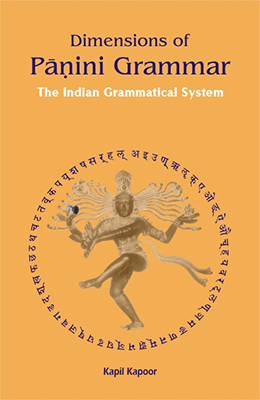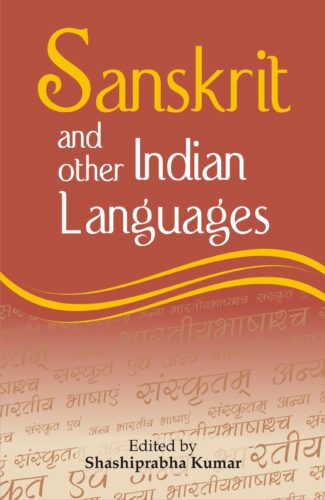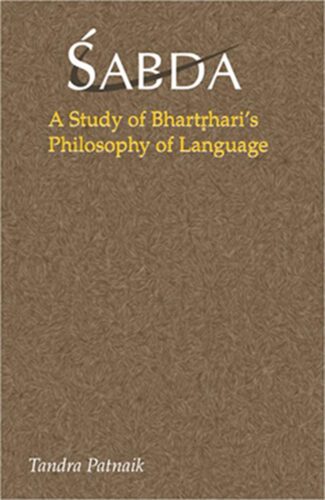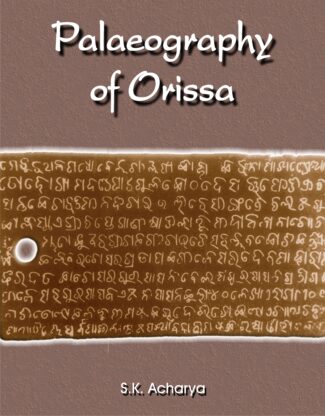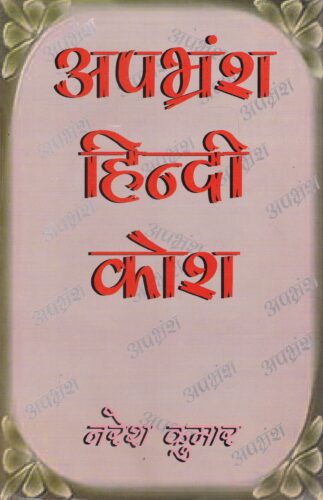

Apbharamsa Hindi Kos...
Apbharamsa Hindi Kosha
Apabhramsa-Hindi-Dictionary by: Naresh KumarThis Dictionary of Hindi Apabhramsa gives in detail the grammatical importance of words, their meanings, correct spellings, the alternate words and their various usages as mentioned by lexicographer Naresh Kumar.
₹1,500.00 Original price was: ₹1,500.00.₹1,350.00Current price is: ₹1,350.00.
ISBN: 9788124601365
Year Of Publication: 1999
Edition: 1st
Pages : xlv, 869
Language : Hindi
Binding : Hardcover
Publisher: D.K. Printworld Pvt. Ltd.
Size: 23 cm.
Weight: 1500
This Dictionary of Hindi Apabhramsa gives in detail the grammatical importance of words, their meanings, correct spellings, the alternate words and their various usages as mentioned by lexicographer Naresh Kumar.

- Sale!Sabdapramana by: Purushottama Bilimoria
₹750.00Original price was: ₹750.00.₹675.00Current price is: ₹675.00.Shabdapramana or Testimony is a formidable doctrine within Indian philosophy. A thorough investigation of this thesis is long overdue. What is shabdapramana (word as knowledge)? What is involved in hearing words? Is the understanding derived through hearing utterances direct or indirect? Does this peculiarly linguistic understanding (shabdabodha) amount to knowledge (prama), or does it depend on certain other conditions for its truth? Further, what sort of theories of meaning, understanding, and knowledge would be required to ground a successful shabdabodha as prama,> need careful attention. It is sometimes said that Indian thinkers had no particularly interesting theory of understanding. The present work sets out to address these issues issues that have engaged traditional and modern thinkers alike. Based on the classic text, Advaita Vedanta-paribhasha of Dharmarajadhvarindra (17th century), the analysis and arguments extend to the views of and criticisms from the Nyaya, Purva Mimamsa and the grammarian/linguistic schools within Indian philosophy, with a treatment of similar concerns in Western philosophy. There is a compelling thesis here that should be taken seriously in any philosophy. Long discarded as a distinct source of knowledge in Western philosophy, Testimony might be fruitfully re-examined. This could lead to mutual dialogue between philosophy and religion, and pave the way for critical metaphysics.
- Sale!Dimensions of Panini Grammar by: Kapil Kapoor
₹950.00Original price was: ₹950.00.₹855.00Current price is: ₹855.00.Leonard Bloomfield described Panini’s Ashtadhyayi (7th century bc) as ‘one of the greatest monuments of human intelligence.’ It is a complete, explicit and comprehensive grammar of both spoken and textual (compositional) Sanskrit. Most of the reputed and renowned Indian and foreign universities running courses on Indian knowledge systems, study it for its principles of analysis, organization and description. What is of great interest is the theoretical framework that informs this grammar, a framework that has remarkable power to describe human languages, particularly the Indian languages.
Panini is the watershed in the linguistic history of India. Before Panini, there was extensive work in phonetics, in morphology and lexicon (in the patha tradition) and in nirvacana (etymology). There is evidence also of the existence of several schools of grammar. In what is characteristic of the Indian intellectual traditions, Panini distilled the available grammatical knowledge and put it in 32000 syllables — as if, it has been said, an ocean has been accommodated in a cow’s hoof-mark. After Panini, a whole tradition developed and produced rich works by Patanjali, Candrakirti, Jainendra, Bhartrihari, Bhojraja, Hemacandracarya, Bhattoji Dikshita, Nagesha Bhatta and many others. It also inspired work in literature and philosophy and has left its mark on the entire intellectual tradition. In the modern period, there is a spread of Ashtadhyayi studies round the globe and it has proved to be of great interest for the study of knowledge representation in the departments of system sciences.
A comprehensive study of the different dimensions of this wonderful grammar enlarges and alters the conceptual horizons of young minds and of all those who care to be associated with the Indian grammatical systems. This book is a record of that adventure. - Sale!Sanskrit and Other Indian Languages by: Shashi Prabha Kumar
₹440.00Original price was: ₹440.00.₹396.00Current price is: ₹396.00.This book is mainly a compilation of articles which were primarily presented at the Sanskrit Week Programme organized by the Special Centre for Sanskrit Studies, Jawaharlal Nehru University, New Delhi from 714 August 2006. A few articles have, however, been added later on. Sanskrit and Other Indian Languages features the influence and interaction of Sanskrit with Prakrit, Hindi Apabhramsha, Urdu, Bangla, Tamil, Telugu, Kannada, Malayalam, Assamese, Punjabi, Kashmiri and Gujarati. It covers various aspects of mutual reciprocation between Sanskrit and other Indian languages such as Þ conceptual, structural, grammatical, historical, linguistic, colloquial as well as literary. Issues of oral and written forms of language as also of textual translations have been dealt with by Sanskrit scholars who are well-versed in respective Indian languages. Finally, there is an article which argues for Sanskrit as a National Language of India. This book is a modest attempt to convey the inherent thought-pattern of Indian mind basically enshrined in Sanskrit but expressed through variety of verbal forms across the country.
- Sale!Sabda by: Tandra Patnaik
₹800.00Original price was: ₹800.00.₹720.00Current price is: ₹720.00.It is the first ever study of the fifth-century scholar, Bhartriharis Vakyapadiya in an altogether modern, the post-Fregean, perspective on the Philosophy of Language. A uniquely original thinker in Indias splendid grammarians tradition, Bhartrihari overreached the limits of language analysis set by his predecessors like Panini and Patanjali constructing, as he did, a brilliant Philosophy of Language that sought to spell out, among other aspects, the subtle distinctions between the knowable and the sayable, between what is said and what is meant, between the semantics of everyday speech and literary discourse. Sadly, Bhartrihari has, through the centuries, suffered neglect, largely because the Grammarian School never figured in the six major systems of traditional Indian philosophy.
For the first time, this monograph tries to reinterpret Bhartriharis position as a philosopher, emphasizing the high relevance of his Vakyapadiya to modern Western thought. A reputed scholar of grammar, philosophy and Sanskrit studies, the author presents Bhartriharis analyses of language methodically, unbiased. And, significantly, in contemporary philosophical idiom with contextual focus on the views of modern Western philosophers: Frege, Wittgenstein, Grice, Austin, Davidson, Searle, Strawson and the like. Also offered here is a lucid exposition of the Sphota Theory.
Growing from Dr Patnaiks a decade-long research on Bhartriharis philosophy, the volume highlights not only ancient Indian contribution to the study of language, but the interconnectedness among its indigenous approaches to linguistics, philosophy, logic and aesthetics as well. - Sale!Palaeography of Orissa by: Subrata Kumar Acharya
₹1,400.00Original price was: ₹1,400.00.₹1,260.00Current price is: ₹1,260.00.The book studies the palaeography of Orissa from the third to the seventeenth century ad. It focuses on the evolution of the regional script of Orissa from the Bràhmã script to the advent of the modern Oriya script through various intermediate stages. Analyzing several hundreds of copper plate and stone inscriptions and with reproductions from facsimiles of many original inscriptions, the author delves into the palaeographical peculiarities of the scripts prevalent in different sub-regional/regional kingdoms of ancient and medieval Orissa. He followed the dominant stylistic nomenclatures for studying the scripts and emphasized on the importance of the geo-political forces in determining the writing style of a sub-region/region. The view that the process of `palaeographical segmentation ran parallel with linguistic segmentation’ has been successfully tested in Orissan context. The advent of the proto-regional and regional script of Orissa has been studied in the backdrop of this process. Besides, an attempt has been made to resolve the prolonged debate on the parentage of the modern Oriya script. It has been argued that political changes and ideologies of the ruling class were some of the determining factors in the growth and development of Oriya language and script. The work will be useful to scholars and students of history, culture, language and literature for understanding the growth and development of languages and scripts in interaction with the political milieu and cultural growth of a region.




